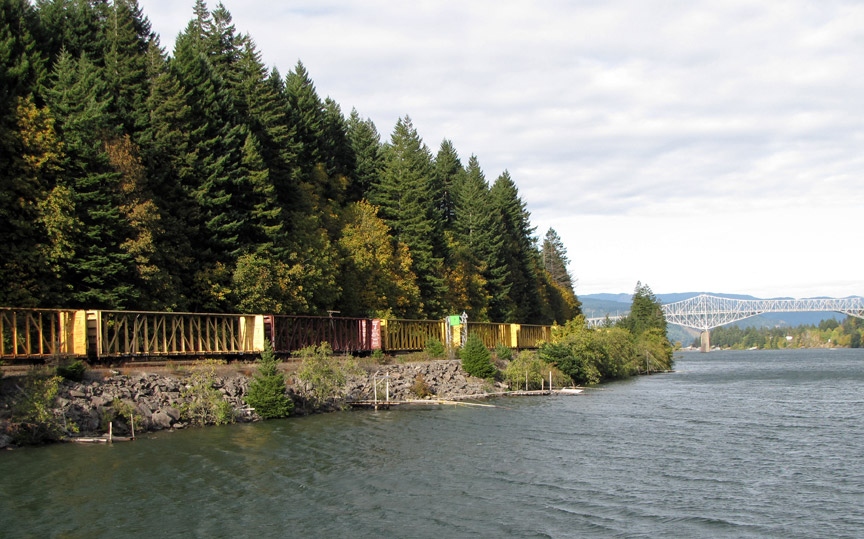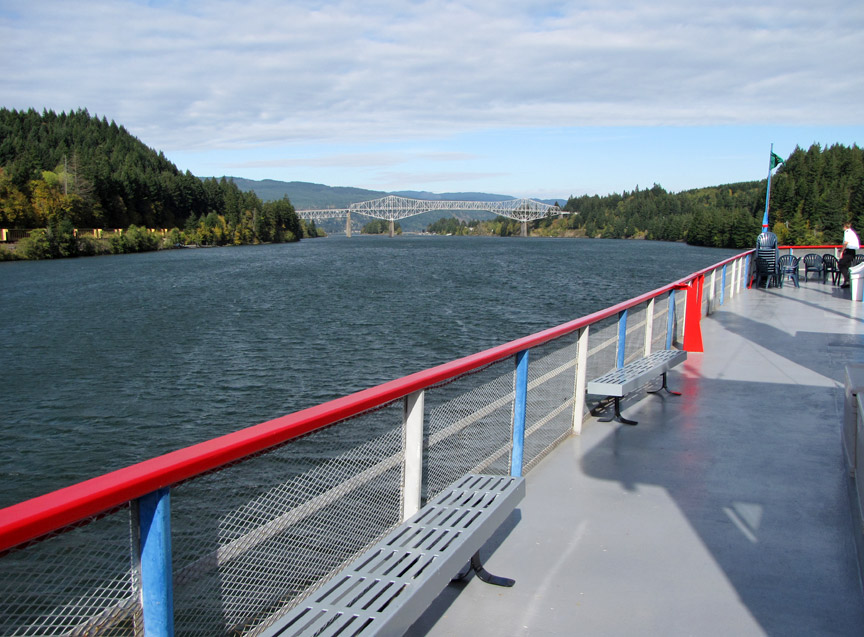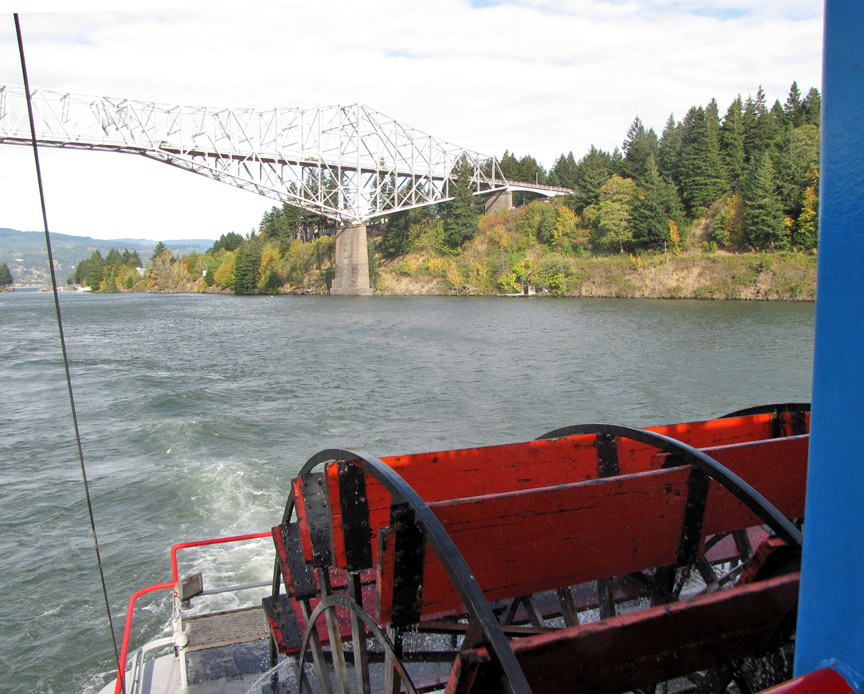

Steamboats
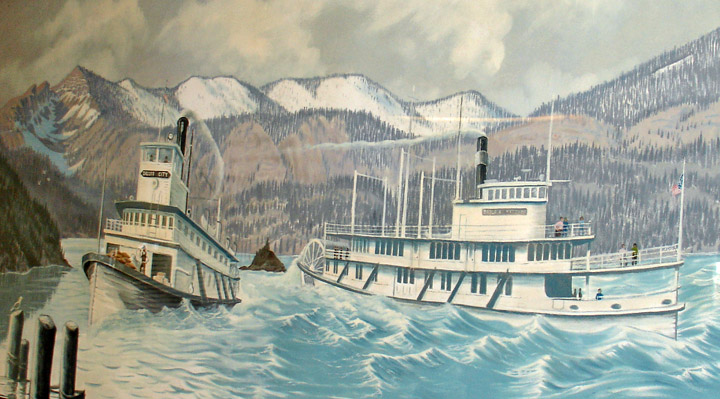
Many steamboats operated on the Columbia River and its tributaries, in the Pacific Northwest region of North America, from about 1850 to 1981. Major tributaries of the Columbia that formed steamboat routes included the Willamette and Snake rivers. Navigation was impractical between the Snake River and the U.S./Canadian border, due to several rapids, but steamboats also operated along the Wenatchee Reach of the Columbia, in northern Washington, and on the Arrow Lakes of southern British Columbia.
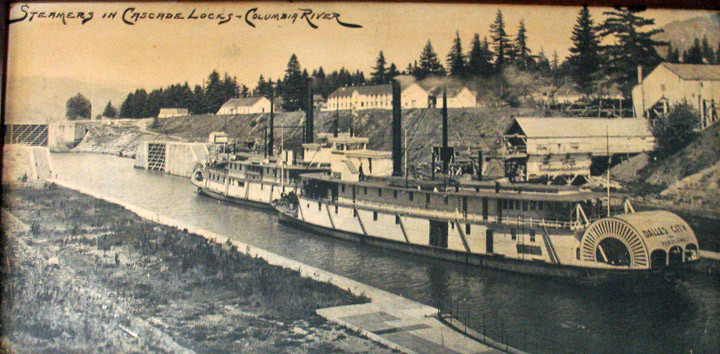
steamers in Cascade Locks
The paddle-wheel steamboat has been described as an economic "invasion craft"
which allowed the rapid exploitation of the Oregon Country, a huge area of the
North American continent eventually divided between the United States and
Canada, and of Alaska and the Yukon. Three basic types of steamboat were used on
inland waterways: propeller, side-wheeler, and sternwheeler. Propellers required
deeper draft than was commonly available on inland rivers, and side-wheelers
required expensive docking facilities. Stern-wheelers were more maneuverable
than side-wheelers and could make a landing just about anywhere. For these
reasons, the stern-wheeler type was dominant over the propeller and the
side-wheeler in almost all inland water routes.
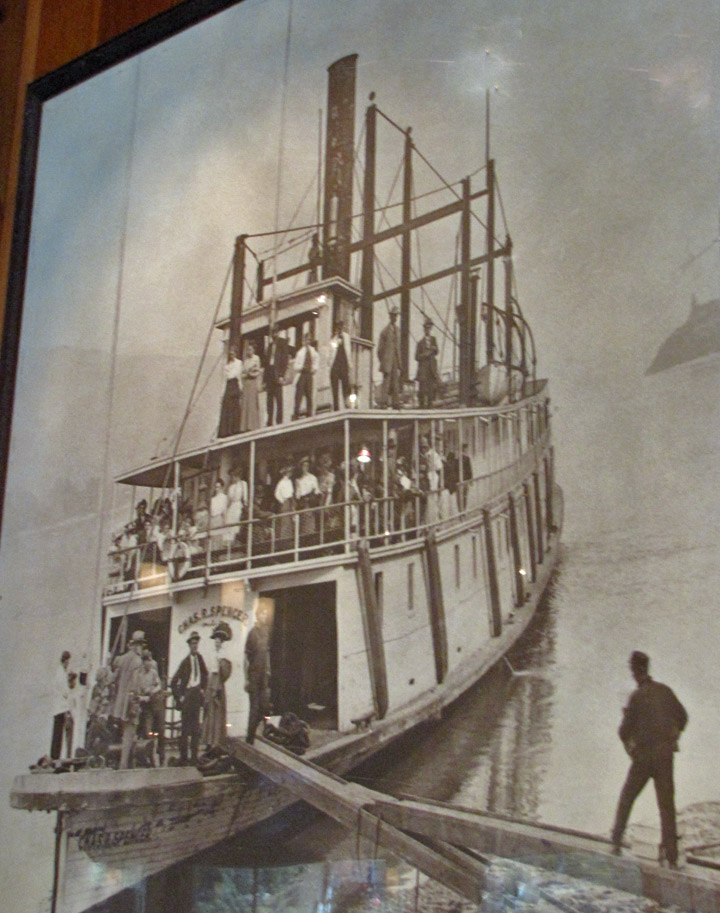
Steamboats earned money by charging passengers fares and shippers for carrying
cargo. Some vessels managed to carry as many as 500 people together with 500
tons of cargo. Passenger fares varied over time. In the early 1850s, fares for
the Eagle, running from Oregon City and Portland, were $5 a trip for passengers
and $15 per ton of freight. During a gold rush, passenger fares were $23 for
passage from Portland to Wallula, with various other charges, such as meals, in
addition. Cargo was charged by the ton and by the distance carried. Sample rates
in the early 1860s, following the establishment of a near monopoly on river
transit, showed cargo rates running from $15 per ton for the haul from Portland
to The Dalles (121 miles), and 90 per ton for Portland to Lewiston (501) miles.
A ton was not a unit of weight but a unit of volume, with cargo charges based on
40 cubic feet equaling one ton. Various chicaneries were practiced by the
steamboat companies to increase the tonnage charges for items shipped. One
authority states that gross tonnage was measured at 100 cubic feet to the ton,
which would still permit the steamboat companies to fix the "ton" for customer
charges at 40 cubic feet.
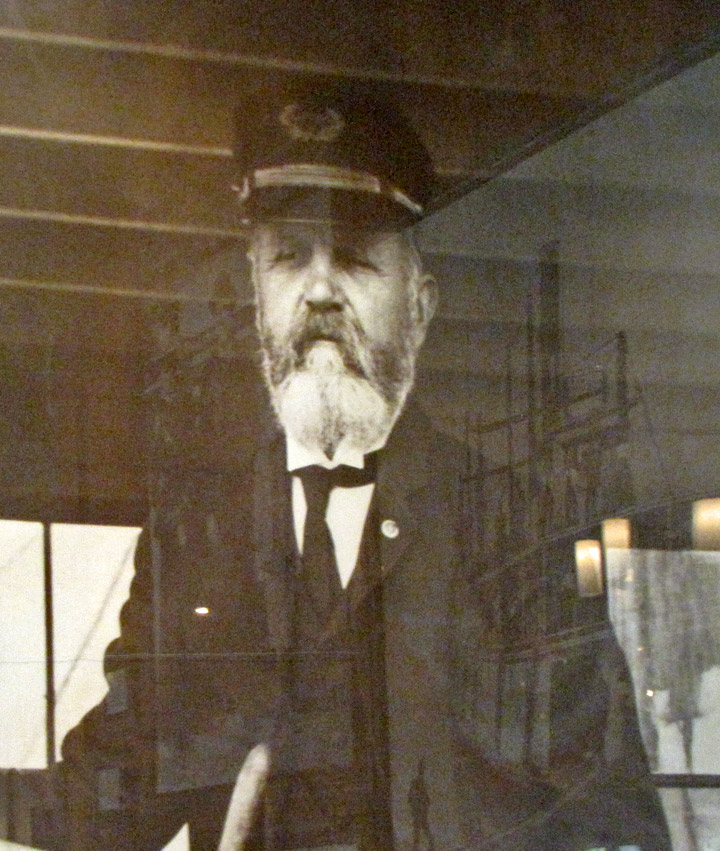
a Captain
Steamboat capacity was measured by tonnage. Gross tonnage was the total volume capacity of the boat, while registered tonnage was the total theoretical volume that could be used to carry cargo or passengers once mechanical, fuel and similar areas had been deducted. For example, the sternwheeler Hassalo, built in 1880, was 160 feet (49 m) long, and rated at 462 gross tons and 351 registered tons. Steamboat captains often became wealthy men. In 1858, the owners of the Colonel Wright paid her captain, Leonard Wright, $500 per month, an enormous amount of money for the time.

Most steamboats burned wood, at an average rate of 4 cords an hour. Areas
without much wood, such as the Columbia River east of Hood River, required wood
to be hauled in and accumulated at wood lots along the river Provision of fuel
wood for steamboats itself became an important economic activity.
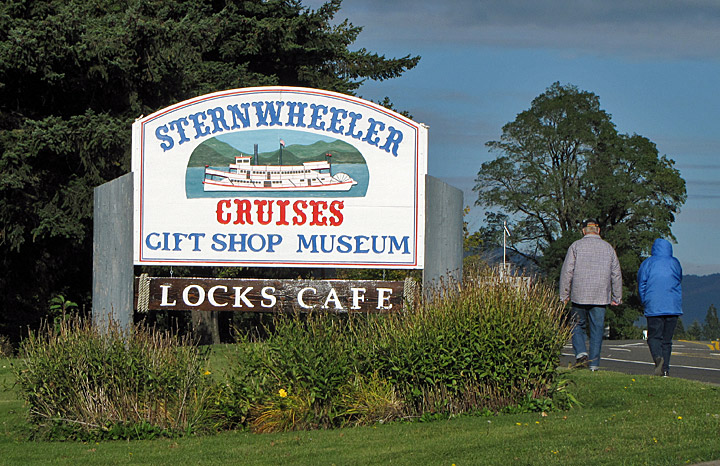
cruises at Cascade Locks
Timmen reports that in 1867, Portland's exports totaled $6,463,793, of which about $4 million was gold dust and ingots mined from Idaho and Montana mines to be taken to the San Francisco mint. In 1870, the situation was similar. Other commodities hauled included lumber, agricultural products, salted salmon, and livestock. Once gold mines started winding down, the steamboats on the upper Columbia and Snake rivers carried wheat.

photo of the sternwheeler
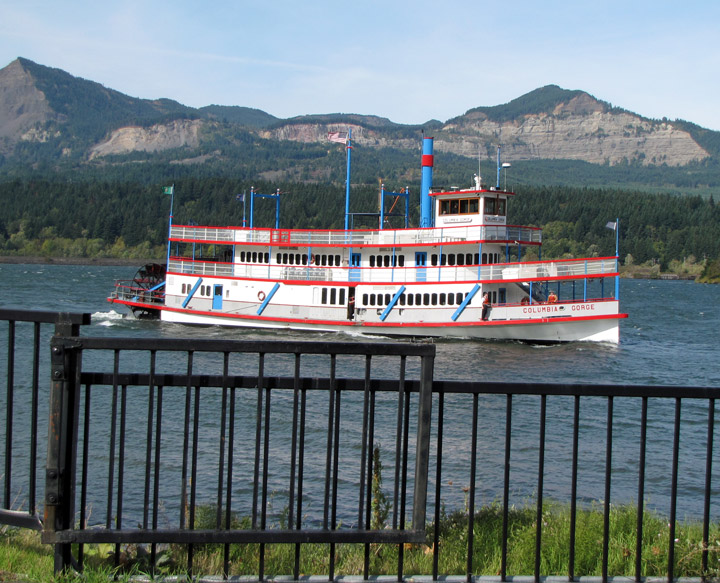
on the water (October 2009)
Originally, the Columbia River was not considered navigable beyond its
confluence with the Snake River just north of the Wallula Gap. This led to the
somewhat misleading designations of stretch of the Columbia River from Wallula
to its mouth as the lower, middle and upper river, generally defined as:
* The "lower river," meaning the routes from from Astoria upriver to where the
Willamette flows into the Columbia, and then up the Willamette to Portland or
Oregon City. The lower river also included the run up the Columbia River Gorge
from the mouth of the Willamette to the portage (and, later, locks) at the
Cascades Rapids.
* The "middle river," meaning the route from the top of the Cascades to The
Dalles, where another set of rapids began, called Celilo Falls, which required
another and longer portage.
* The "upper river" meaning the route from Celilo Village, at the top of Celilo
Falls, to Wallula Gap, near the mouth of the Snake River.
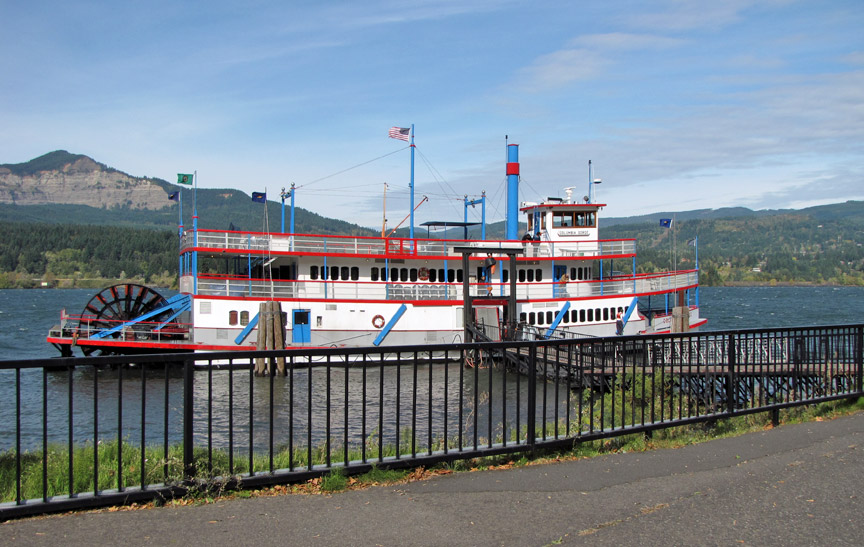
at the dock
The Willamette River flows northwards down the Willamette Valley until it meets
the Columbia River at a point 101 miles (163 km) from the mouth of the
Columbia. In the natural condition of the river, Portland was the farthest point
on the river where the water was deep enough to allow ocean-going ships. Rapids
further upstream at Clackamas were a hazard to navigation, and all river traffic
had to portage around Willamette Falls, where Oregon City had been established
as the first major town inland from Astoria.
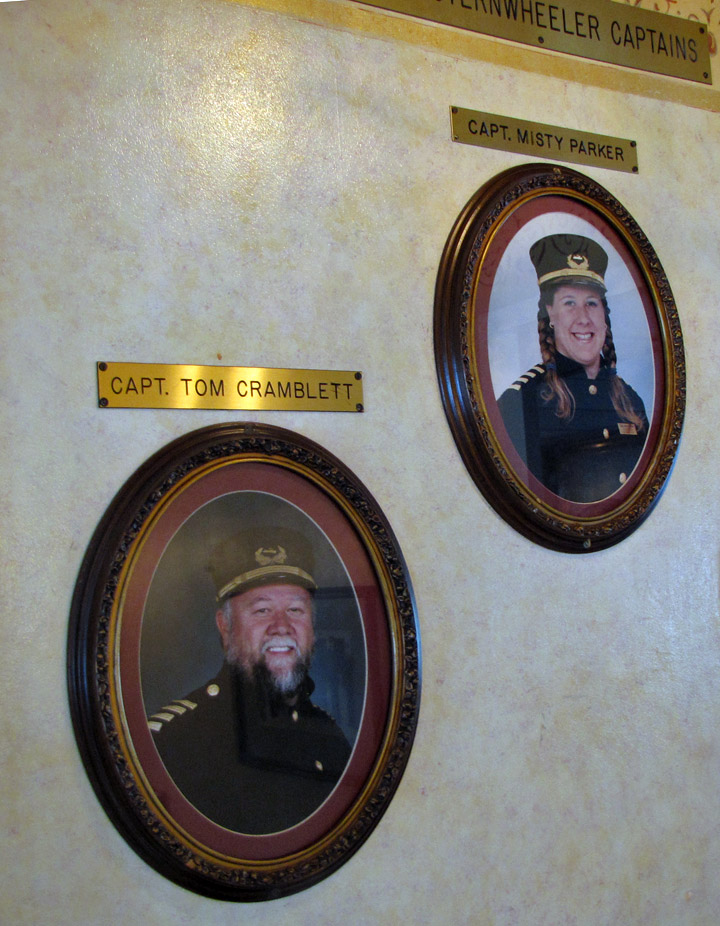
the Captains
Far inland, the Columbia river was interrupted by rapids and falls, so much that it was never made freely navigable once Priest Rapids was reached above Pasco, Washington. There were important steamboat operations on many lakes that ultimately were tributary to the Columbia River, both in the United States and in Canada. These routes included Okanagan Lake, Arrow Lakes, Kootenay Lake and Kootenay River, and lakes Coeur d'Alene and Pend Oreille.
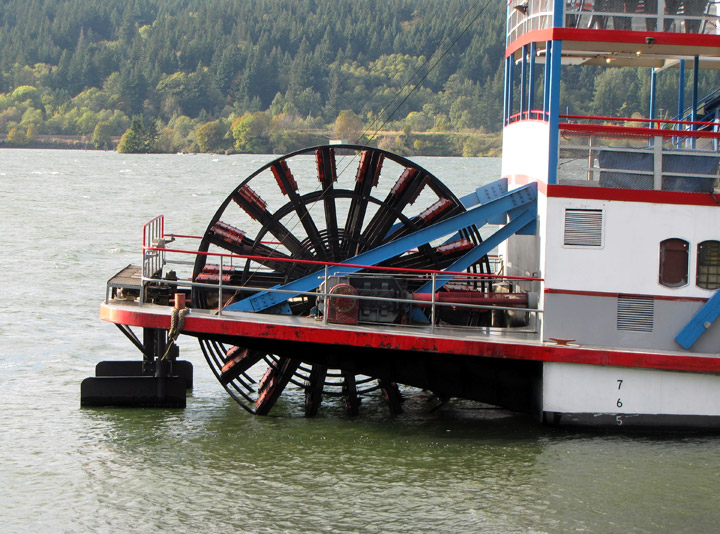
rudder behind the stern wheel
Early operations on the Columbia were almost exclusively confined to the lower river. The first steamboat to arrive in Oregon was the Beaver, which was built in England and arrived at Oregon City on May 17, 1836.
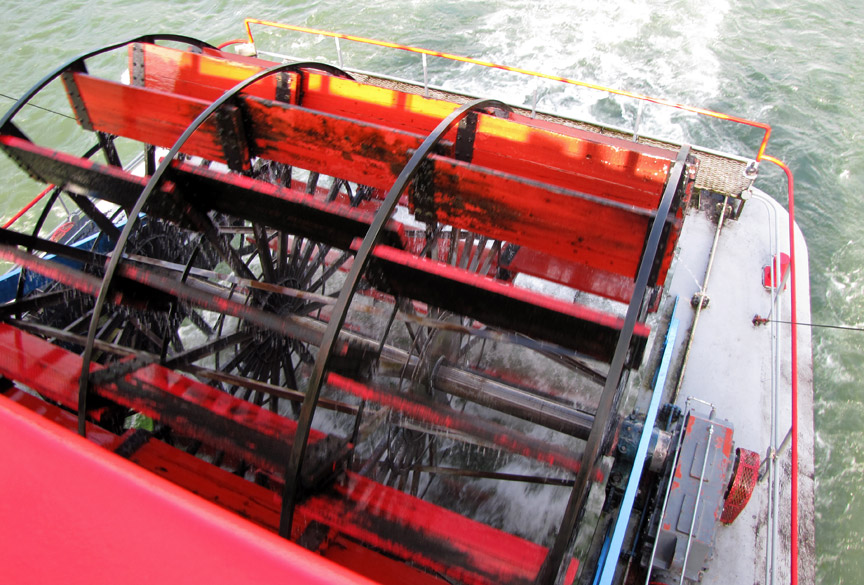
underway
In the 1840s and 1850s, ocean-going ships equipped with auxiliary steam engines
were able to and did come up the lower river as far as Portland, Oregon and Fort
Vancouver. However, no other riverine steamboat worked in the region until the
side-wheeler Columbia was launched in early June 1850, at Astoria. Columbia was
a basic vessel, built with no frills of any kind, not even a passenger cabin or
a galley. Her dimensions were 90 feet (27 m) in length, 16-foot (4.9 m) beam,
4-foot (1.2 m) of draft and 75 gross tons. On July 3, 1850, Columbia began her
first run from Astoria to Portland and Oregon City. Columbia's first captain was
Jim Frost, who had been a pilot on the Mississippi river. It took two days to
get to Portland, largely because of the captain's lack of familiarity with the
river channel and his resulting caution. After that, Columbia made the Oregon
City-Portland-Astoria run twice a month at four miles per hour, charging $25 per
passenger and $25 per ton of freight.
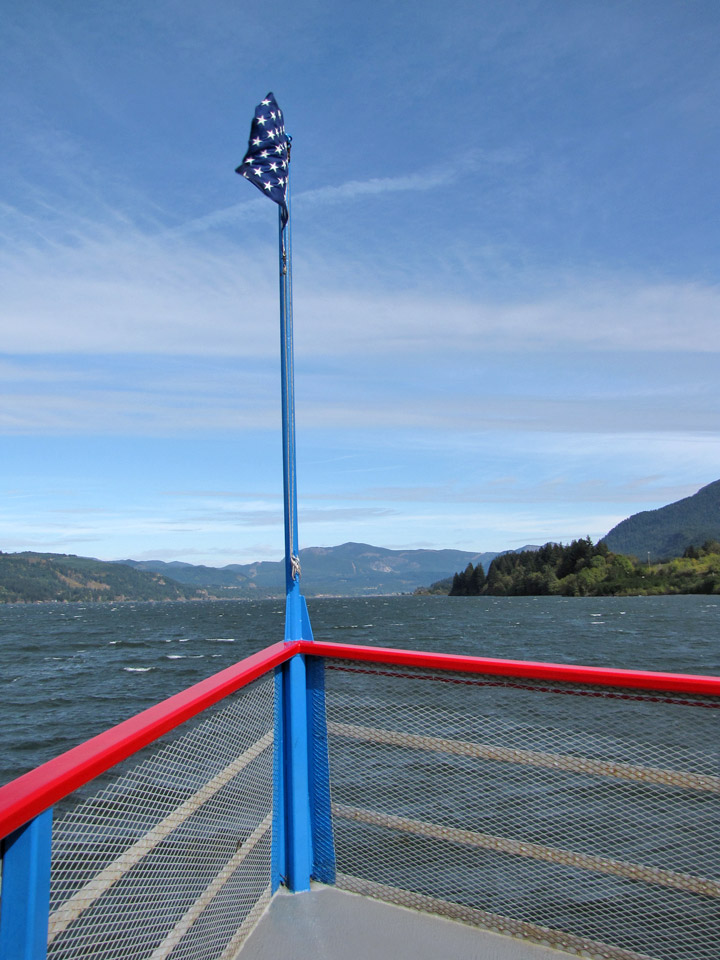
heading upstream
Columbia held a monopoly on the river until until December 25, 1850, when the side-wheeler Lot Whitcomb was launched at Milwaukie, Oregon. Lot Whitcomb was much larger than the Columbia (160 feet long, 24-foot (7.3 m) beam, 5 feet (1.5 m) of draft, and 600 gross tons). and far more comfortable. Her engines were designed by Jacob Kamm, built in the eastern United States, then shipped in pieces to Oregon. Her first captain was John C. Ainsworth, and her top speed was 12 miles per hour. Lot Whitcomb charged the same rates as the Columbia and readily picked up most of her business. Lot Whitcomb was able to run upriver 120 miles (190 km) from Astoria to Oregon City in ten hours, compared to the Columbia's two days. She served on the lower river routes until 1854, when she was transferred to the Sacramento River in California, and renamed the Annie Abernathy.
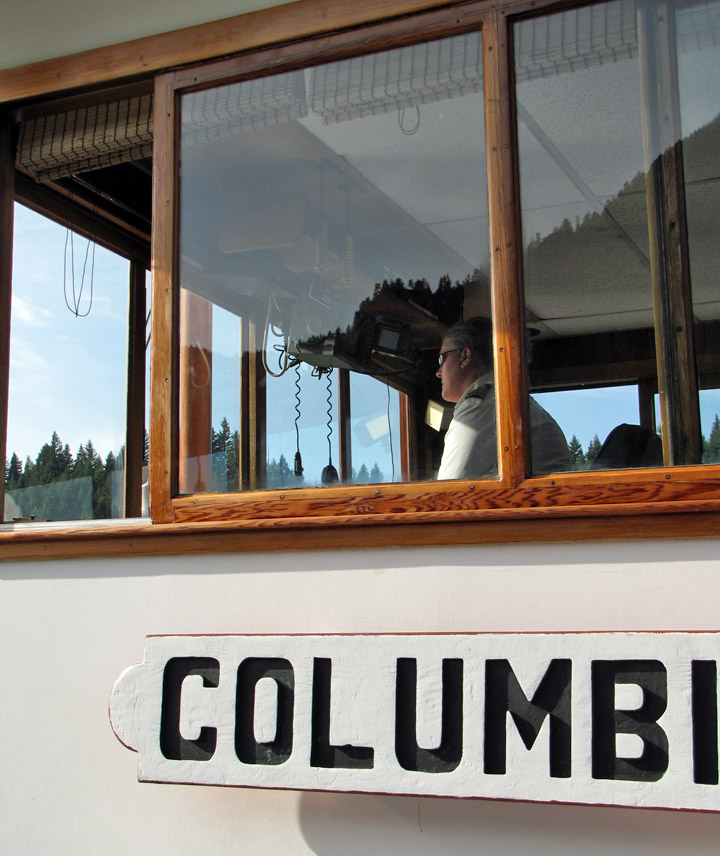
Captain in the Wheel House
The side-wheeler Multnomah made her first run in August 1851, above Willamette Falls. She had been built in New Jersey, taken apart into numbered pieces, shipped to Oregon, and reassembled at Canemah, just above Willamette Falls. She operated above the falls for a little less than a year, but her deep draft barred her from reaching points on the upper Willamette, so she was returned to the lower river in May 1852, where for the time she had a reputation as a fast boat, making for example the 18-mile (29 km) run from Portland to Vancouver in one hour and twenty minutes.
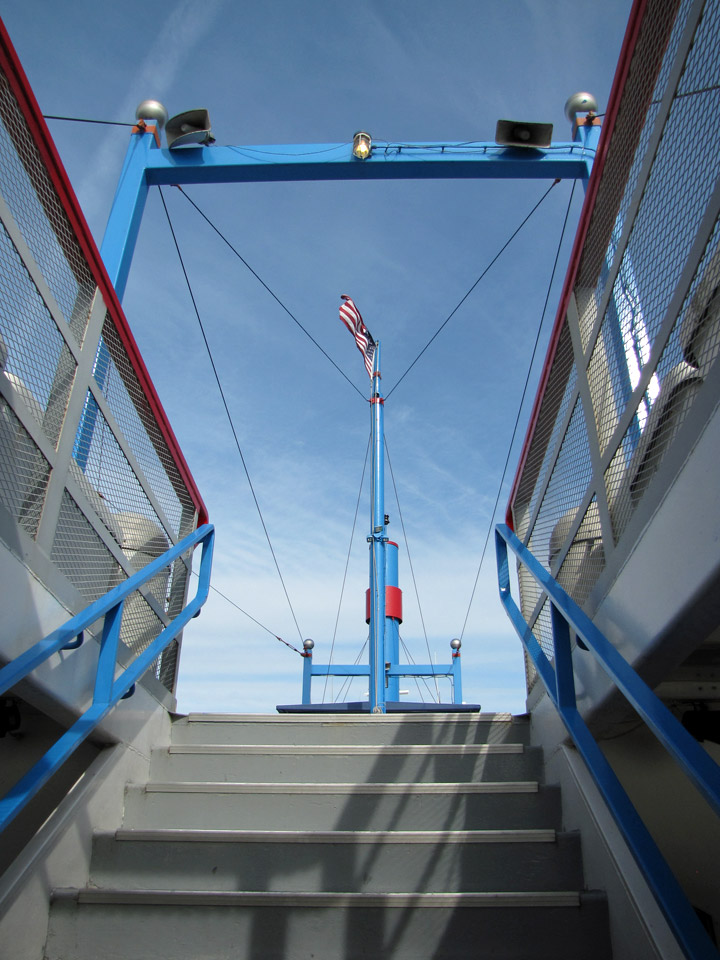
Another sidewheeler on the Willamette at this time was the Mississippi-style
Wallamet, which did not prosper, and was sold to California interests. In
1853, the side-wheeler Belle of Oregon City, an iron-hulled boat built entirely
in Oregon, was launched at Oregon City. Belle (as generally known) was notable
because everything, including her machinery, was of iron that had been worked in
Oregon at a foundry owned by Thomas V. Smith. Belle lasted until 1869, and was a
good boat, but was not considered a substitute for the speed and comfort (as the
standard was then) of the departed Lot Whitcomb. Also operating on the river at
this time were James P. Flint, Allen, Washington, and the small steam vessels
Eagle, Black Hawk, and Hoosier, the first two being iron-hulled and driven by
propellers.
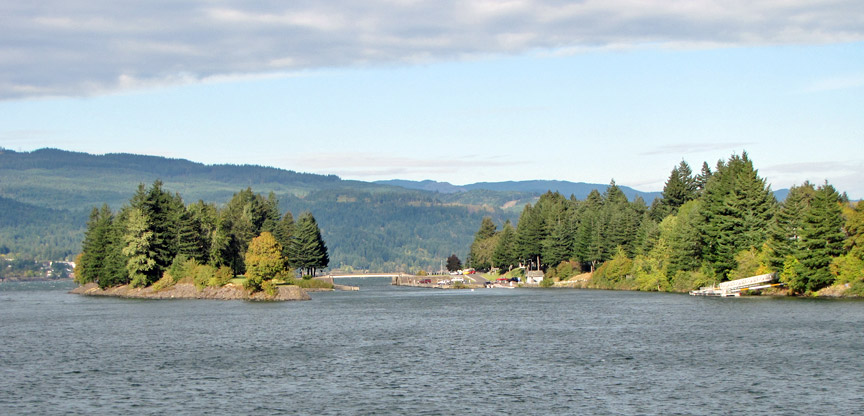
view of former Cascade Lock
Jennie Clark, built by Jacob Kamm with John C. Ainsworth as her first captain,
was placed in service in February 1855. She was the first sternwheeler on the
Columbia River system. Her hull and upper works were built at Milwaukie, while
her engines were built in Baltimore to Kamm's specifications, for a price of
$1,663.16, and shipped around to the West Coast, which cost another $1,030.02.
Kamm and Ainsworth had settled on the sternwheeler as superior to
propeller-driven and side-wheel boats. Propellers were too vulnerable to
expensive-to-fix damage to propellers and shafts from rocks and other
obstructions in the river. Sidewheelers were too difficult to steer and needed
expensive dock facilities.
Text from Wikipedia
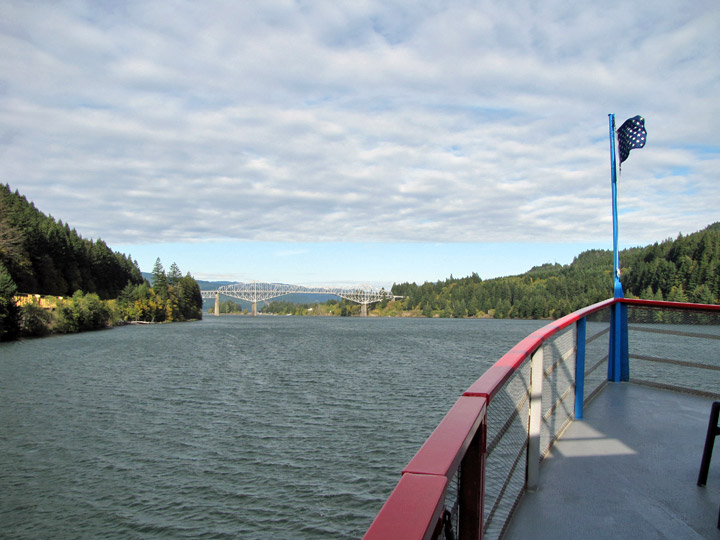
approaching the Bridge of the Gods
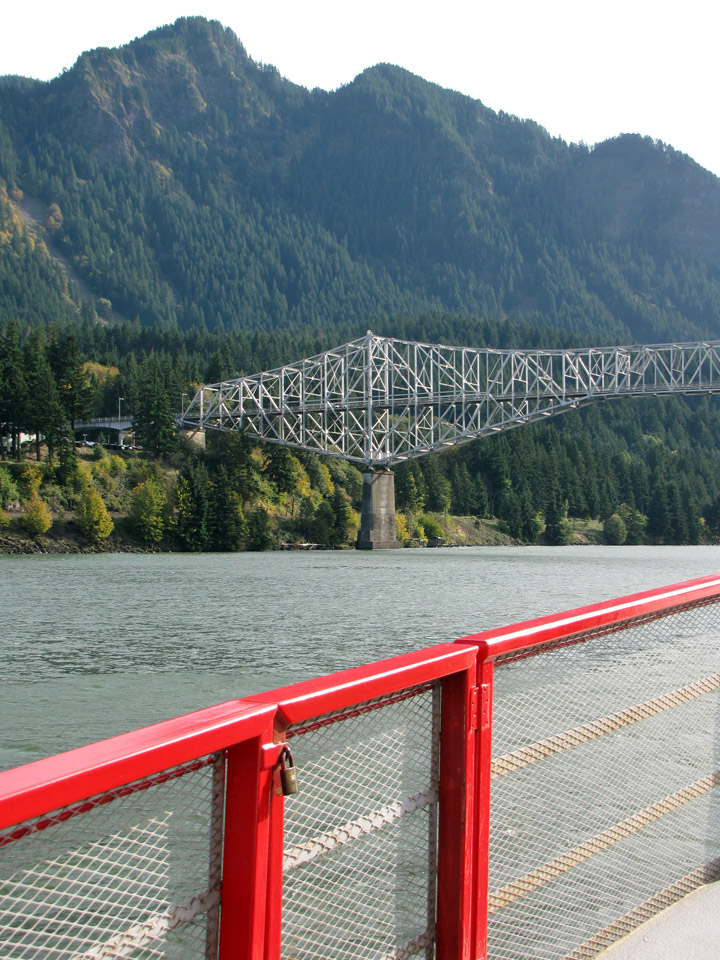
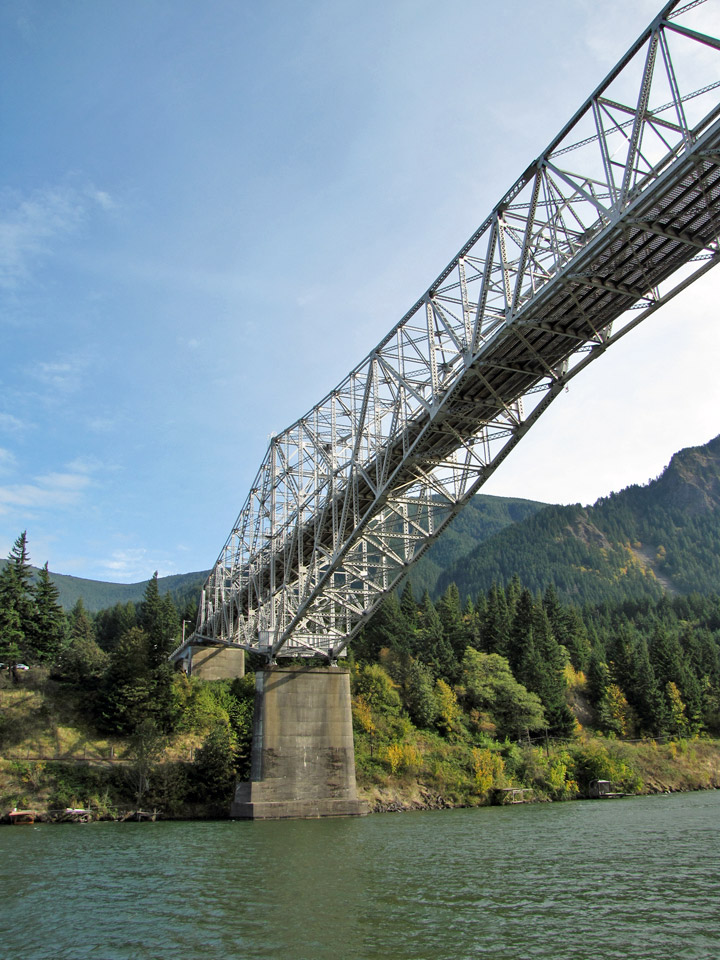

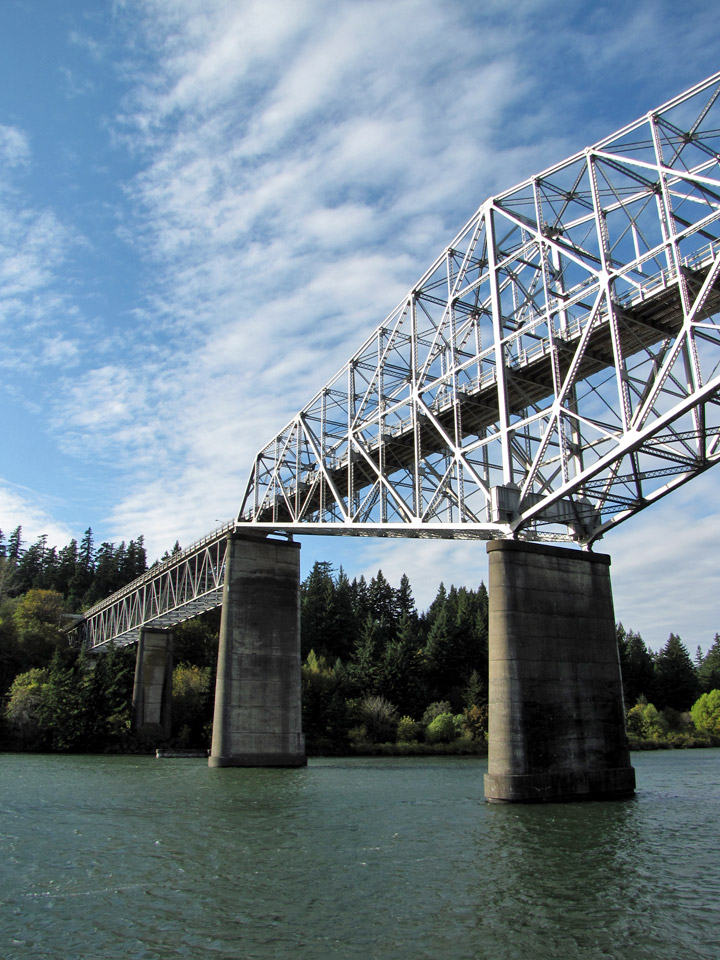
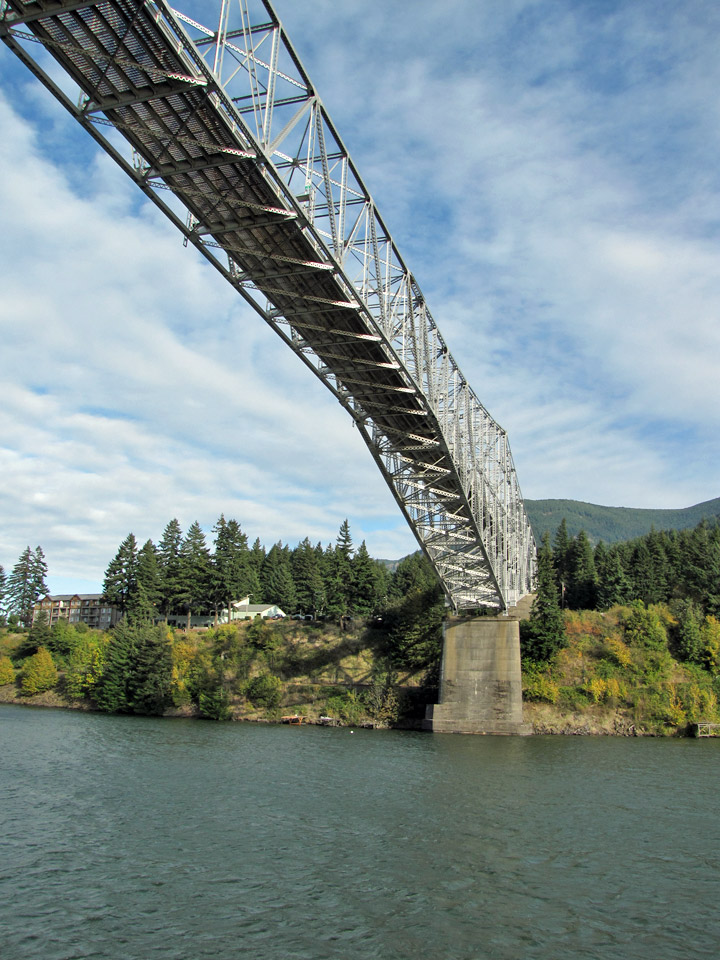
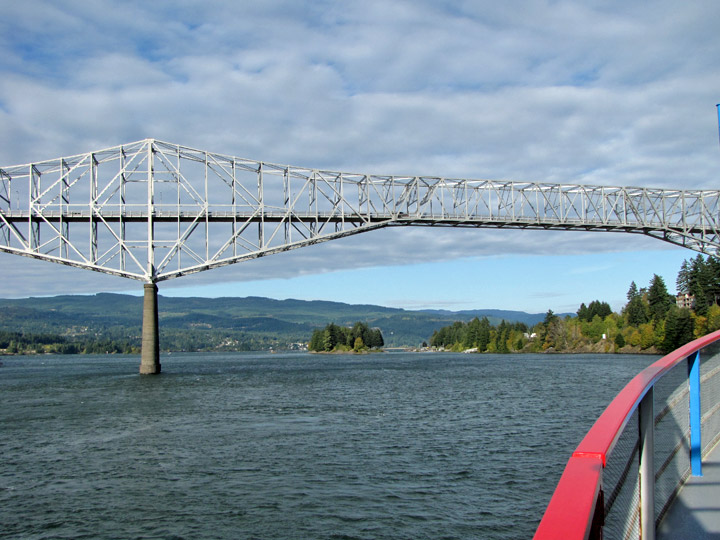
return view
